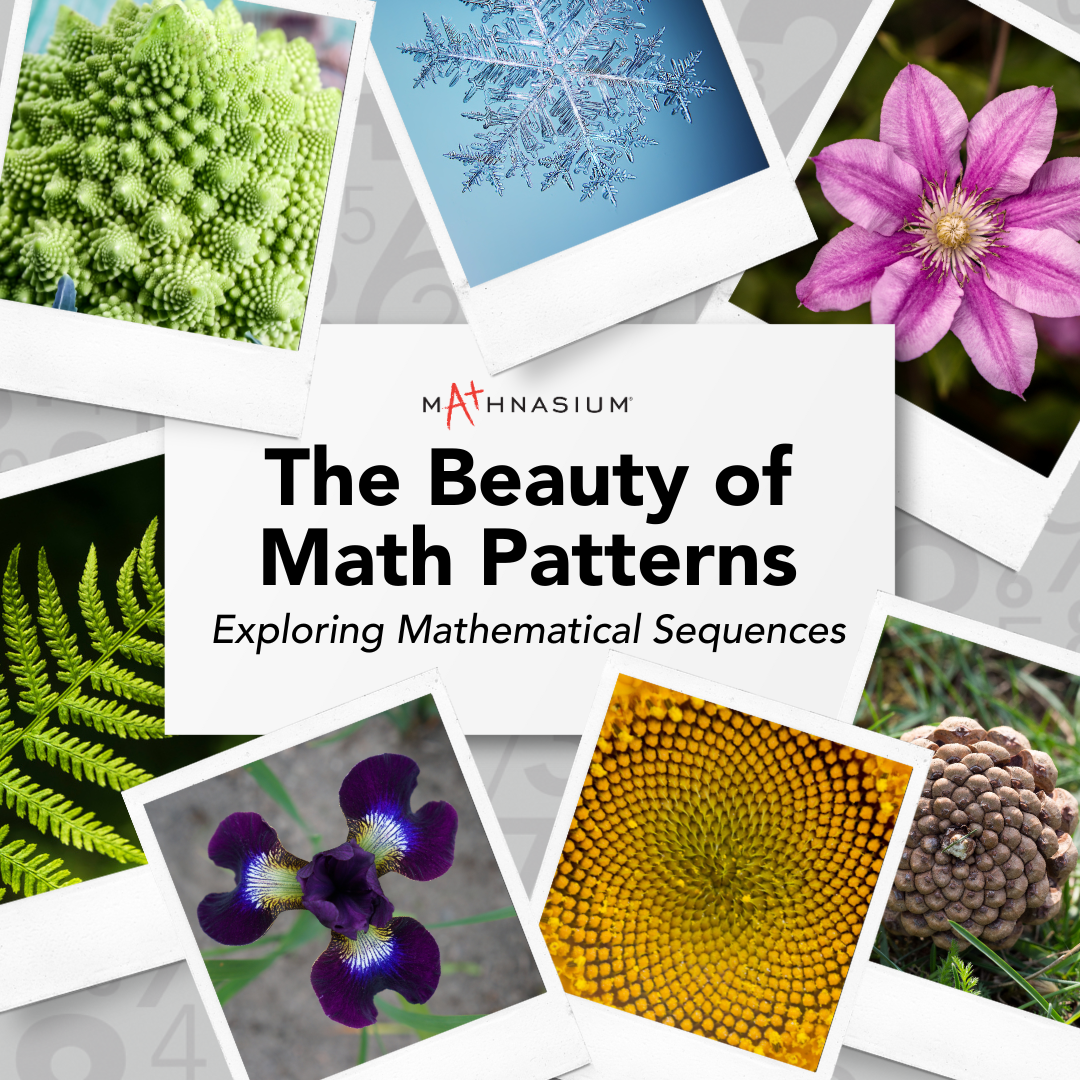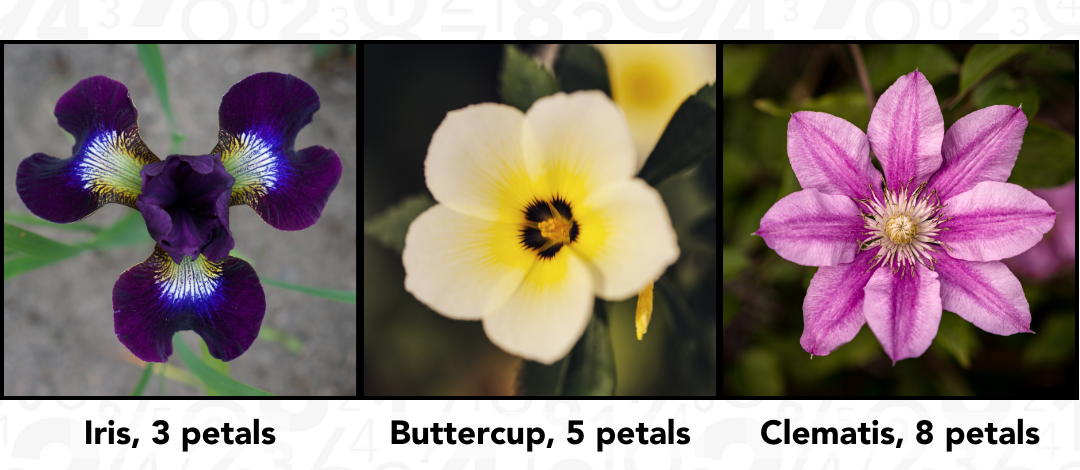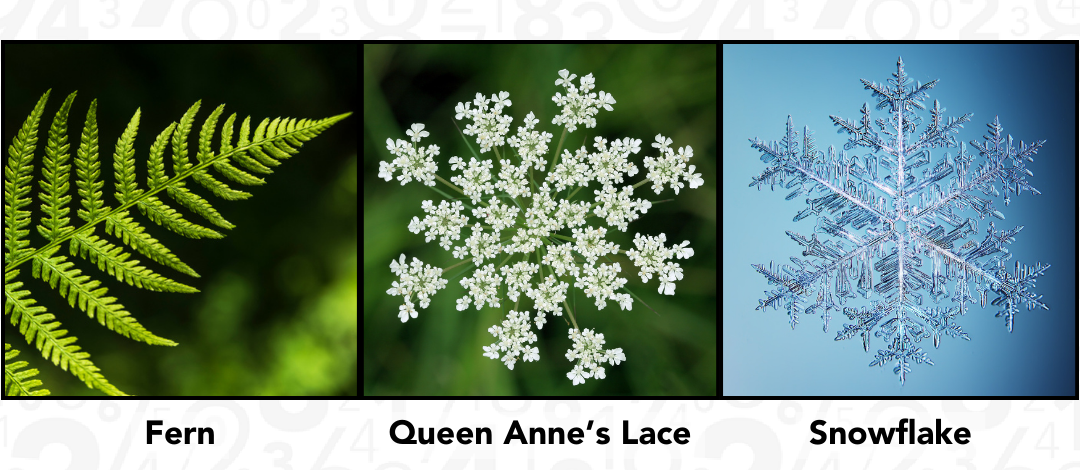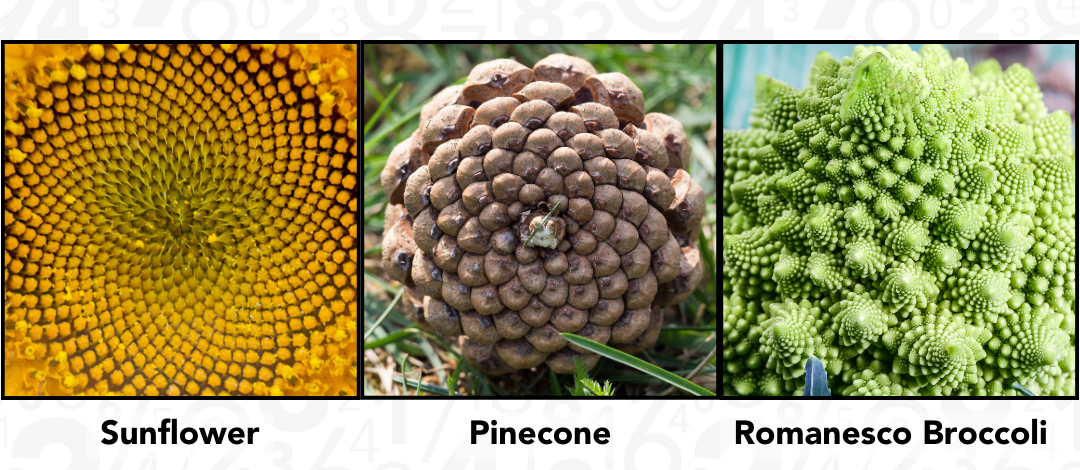Parent Mathing Tip #10: Measurement
These tips give parents ideas for math exercises that will develop their child's math abilities. Today’s parent tip for “mathing” with your child focuses on measurement.

Math happens. All around us. Every day. There’s the obvious — calculating the tip at a restaurant, doubling a recipe, or in countless math classes around the globe. And there’s the not-so-obvious. Flower petals, the spirals of a shell, or snowflakes, for example. They are captivating in their beauty, and their beauty speaks to us with the help of the language of mathematics, or more specifically, math patterns.
Where are the unexpected places where math is happening? The garden is one. Take your favourite flowers. You would find that many of them have an odd number of petals, with some specific numbers showing up more consistently than others. These are not random numbers, but part of one of most significant sequences of numbers in the math world.
Sequences are basically patterns in math that are generated by an algorithm, or rule. The pattern of the Fibonacci sequence (named for the 13th century mathematician who first recognized it) is that each number is the sum of the two numbers before it, starting with zero. Therefore, the sequence is: 0, 1, 1, 2, 3, 5, 8, 13, 21, 34, 55, 89, 144, 233, and so on for eternity. Connected to the Fibonacci sequence is the golden ratio, which is the ratio of two consecutive Fibonacci numbers. The golden-ratio value is approximately 1.618034, and it is sometimes referred to as the ratio of beauty.
Back to the garden. In your bouquet of blossoms, count petals and you will find Fibonacci numbers. Lilies and irises have 3 petals; buttercups, wild roses, and larkspur have 5 petals. Clematis and delphiniums have 8 petals; ragwort and corn marigolds have 13; while asters, Black-eyed Susans, and chicory have 21. These numbers from the sequence enable perfect layering patterns for a plant’s seeds, leaves, and petals that maximize sun exposure as the flower grows. The ratio of beauty is at work.

Read Next: Celebrating our favourite pattern! | Fibonacci Day
More evidence of mathematics in nature can be found in fractals, which are a type of geometric pattern. Fractals are geometric shapes that retain similarity at different scales. That means they look the same no matter how large or tiny they might be. When you break down a fractal pattern into smaller components, each component will be a nearly identical mini version of the full pattern.
Compared to the Fibonacci numbers, fractals are a relatively recent discovery. Benoit Mandelbrot, a Polish-born French-American mathematician, is widely acknowledged as the father of fractals. He first used the term “fractals” in 1975 to describe irregular shapes with self-similarity — that is, they look more or less the same whether they are greatly magnified or reduced in size. Ferns, Queen Anne’s lace, and snowflakes all have a fractal-like nature. The patterns created in these examples, as well as the hundreds of other fractals found in nature, are intricate, complex, and wondrously captivating.

The identification of fractals opened the door for elements with nonlinear edges to be measured. “In the whole of science, the whole of mathematics, smoothness was everything,” Mandelbrot says in “Hunting the Hidden Dimension.” “What I did was open up roughness for investigation.” This was a mathematical game changer. Now things like coastlines, mountain ranges, or cloud formations could be studied through a mathematical lens.
Read Next: Math in Nature: A Prime Life Cycle for Periodical Cicadas
Although discovered at two significantly different points in time, the 13th century and the 20th century, there is a link between Fibonacci and Mandelbot findings. Fibonacci spirals are based on the Fibonacci sequence, but because the curve of the spiral is the same at any scale, it can be considered a fractal.
Fractals and the Fibonacci sequence and golden ratio are presented in a wealth of nature’s treasures that catch our eye for their beauty and uniqueness. So are concentric circles and symmetry of geometry. The arrangement of seeds on a sunflower, of butterfly wings, the spirals of a galaxy, stalks of broccoli, the scales on a pinecone, the age rings of a tree, or the iconic Nautilus seashell are just a few more examples of the marriage of nature’s wonders and math’s precision. The next time you are choosing a pineapple at the market or raking leaves in the yard, stop and take a close look at the outside of the fruit and the veining in the leaf. Math is happening.

Math is always happening at Mathnasium, where we teach students to understand, master, and enjoy math, from the beauty of sequential patterns in nature to equations to real-world applications.
Whether your child needs to catch up, keep up, or get ahead in math, Mathnasium’s individualized instruction will address their unique learning needs and goals. We’ll create a customized learning plan for them based on an individual assessment, and our highly trained instructors will teach them in the way they learn best, for true understanding. Mathnasium helps students excel in math, develop critical thinking and problem-solving skills, and gain confidence for a promising future.
To get your child started at Mathnasium, call or visit your local learning centre today!
Sources:
https://fountainmagazine.com/2019/issue-128-mar-apr-2019/the-mathematical-patterns-around-us
https://medium.com/math-πrates/beauty-of-numbers-and-patterns-a-world-shaped-by-math-71d240c4ee05
https://simple.wikipedia.org/wiki/Mandelbrot_set
https://www.pbs.org/wgbh/nova/insidenova/2010/10/goodbye-to-the-father-of-fractals.html
https://blogs.uoregon.edu/mjanesaad199/scientific-research-fractals-the-fibonacci-spiral-and-nature/#


Mathnasium meets your child where they are and helps them with the customized program they need, for any level of mathematics.
